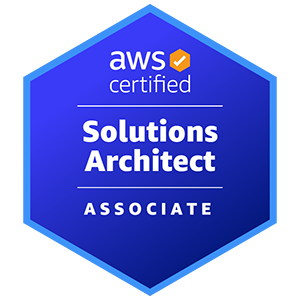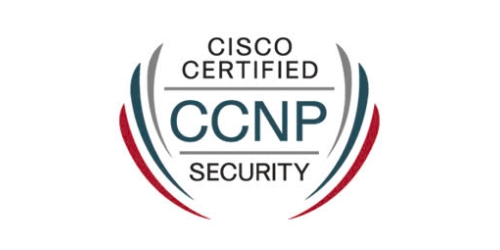KHÓA HỌC AWS ACADEMY CLOUD ARCHITECTING
Chương trình đào tạo
KHÓA HỌC AWS ACADEMY CLOUD ARCHITECTING
KHÓA HỌC AWS ACADEMY CLOUD ARCHITECTING

Thời lượng: 50 giờ
Mục tiêu:
Khóa học AWS ACADEMY CLOUD ARCHITECTING (SAA-C03) nhằm mục tiêu chuẩn bị cho học viên có kiến thức và kỹ năng cần thiết để thiết kế, triển khai và quản lý các kiến trúc đám mây trên nền tảng Amazon Web Services (AWS).
Đối tượng: Sinh viên CNTT năm cuối. Những người đang đảm nhiệm vai trò về kỹ thuật như phát triển phần mềm, phát triển hệ thống và quản trị mạng, các chuyên gia về CNTT.
Giáo trình: Chính hãng
Kiến thức đạt được:
- Tạo kế hoạch di chuyển từ cơ sở sang Đám mây AWS
- Biết cách thiết kế hệ thống an toàn, đáng tin cậy, hiệu suất cao và tiết kiệm chi phí
- Hiểu về các mẫu thiết kế phổ biến và các phương án kiến trúc được áp dụng trong nhiều trường hợp sử dụng khác nhau
- Hiểu cách tận dụng các dịch vụ AWS Cloud cơ bản và quan trọng
- Hiểu biết các thành phần kiến trúc chính cho các ứng dụng hỗ trợ AWS
- Tạo, quản lý, cung cấp và cập nhật các tài nguyên liên quan bằng AWS CloudFormation
- Hiểu biết các dịch vụ cơ sở dữ liệu để lưu trữ và triển khai các ứng dụng có thể truy cập web
- Hiểu cách bảo mật dữ liệu ở mọi lớp trong ứng dụng
NỘI DUNG KHÓA HỌC AWS ACADEMY CLOUD ARCHITECTING
( AWS CERTIFIED SOLUTIONS ARCHITECT – ASSOCIATE )
Module 1: Welcome to AWS Academy Cloud Architecting
This module includes the following sections:
- Course objectives and overview
- Café business case introduction
- Roles in cloud computing
Module 2: Introducing Cloud Architecting
- What is cloud architecting?
- The Amazon Web Services (AWS) Well-Architected Framework
- Best practices for building solutions on AWS
- AWS global infrastructure
At the end of this module, you will be asked to complete a knowledge check that will test your understanding of key concepts covered in this module.
- At the end of this module, you should be able to:
- Define cloud architecture
- Describe how to design and evaluate architectures using the AWS Well-Architected Framework
- Explain best practices for building solutions on AWS
- Describe how to make informed decisions on where to place AWS resource
Module 3: Adding a Storage Layer
This module includes the following sections:
- The simplest architecture
- Using Amazon S3
- Storing data in Amazon S3
- Moving data to and from Amazon S3
- Choosing Regions for your architecture
This module also includes:
- An educator-led demonstration that will show you how the Amazon S3 versioning feature works.
- An educator-led demonstration that will show you how to configure Amazon S3 Transfer Acceleration.
- A hands-on guided lab, where detailed step-by-step instructions explain how to create an Amazon S3 bucket and configure it to host a simple website.
- A hands-on challenge lab where you will deploy a static website to support the café scenario. You will be provided with limited guidance because the tasks that are involved closely mirror the guided lab activity that you completed earlier in the module.
At the end of this module, you should be able to:
- Recognize the problems that Amazon Simple Storage Service (Amazon S3) can solve
- Describe how to store content efficiently by using Amazon S3
- Recognize the various Amazon S3 storage classes and cost considerations
- Describe how to move data to and from Amazon S3
- Describe how to choose a Region
- Create a static website
This module contains the following sections:
- Architectural need
- Adding compute with Amazon EC2
- Selecting an AMI to launch an EC2 instance
- Selecting an EC2 instance type
- Using user data to initialize an EC2 instance
- Configuring storage for an EC2 instance
- Amazon EC2 pricing options
- Amazon EC2 considerations
This module also includes:
- A demonstration that will show you how to launch an Amazon Elastic Compute Cloud (Amazon EC2) instance with user data that installs a web server on the instance.
- A demonstration of the Spot Instance Pricing History page.
- A hands-on guided lab where you create a file storage system with Amazon Elastic Filesystem (Amazon EFS) and mount it on an EC2 instance.
- A hands-on challenge lab where you will launch an EC2 instance with a web application that uses a database for the Café use case.
At the end of this module, you should be able to:
- Identify how Amazon Elastic Compute Cloud (Amazon EC2) can be used in an architecture
- Explain the value of using Amazon Machine Images (AMIs) to accelerate the creation and repeatability of infrastructure
- Differentiate between the EC2 instance types
- Recognize how to launch Amazon EC2 instances with user data
- Recognize storage solutions for Amazon EC2
- Describe EC2 pricing options
- Determine the placement group given an architectural consideration
- Launch an Amazon EC2 instance
Module 5: Adding a Database Layer
This module includes the following sections:
- Architectural need
- Database layer considerations
- Amazon RDS
- Amazon DynamoDB
- Database security controls
- Migrating data into AWS databases
This module also includes:
- A demonstration of Amazon Relational Database Service (Amazon RDS) automated backup and read replica configuration.
- A guided lab where you create an Amazon RDS database and connect to it by using a simple web application.
- A challenge lab that challenges you to migrate data from a database that runs on an Amazon Elastic Compute Cloud (Amazon EC2) instance to an Amazon RDS database.
At the end of this module, you should be able to:
- Compare database types
- Differentiate between managed versus unmanaged services
- Explain when to use Amazon Relational Database Service (Amazon RDS)
- Explain when to use Amazon DynamoDB
- Describe available database security controls
- Describe how to migrate data into Amazon Web Services (AWS) databases
- Deploy a database server
Module 6: Creating a Networking Environment.
This module includes the following sections:
- Architectural need
- Creating an network environment
- Connecting your network environment to the internet
- Securing your network environment
The module also includes:
- A demonstration that will show you how manually create a virtual private cloud (VPC)
- A guided lab where you will create a VPC on your own
- A challenge lab where you will create a VPC, enable private resources to connect to the internet, and create a security layer to control traffic to and from private resources in your VPC.
At the end of this module, you should be able to:
- Explain the foundational role of a virtual private cloud (VPC) in Amazon Web Services (AWS) Cloud networking
- Identify how to connect your AWS networking environment to the internet
- Describe how to isolate resources within your AWS networking environment
- Create a VPC with subnets, an internet gateway, route tables, and a security group
Module 7: Connecting Networks
This module includes the following sections:
- Architectural need
- Connecting to your remote network with AWS Site-to-Site VPN
- Connecting to your remote network with AWS Direct Connect
- Connecting VPCs in AWS with VPC peering
- Scaling your VPC network with AWS Transit Gateway
- Connecting your VPC to supported AWS services
This module also includes:
- An activity in which you discuss how you would use AWS Transit Gateway to connect three virtual private clouds (VPCs)
- A guided lab where you will create a VPC peering connection
At the end of this module, you should be able to:
- Describe how to connect an on-premises network to the Amazon Web Services (AWS) Cloud
- Describe how to connect VPCs in the AWS Cloud
- Connect VPCs in the AWS Cloud by using VPC peering
- Describe how to scale VPCs in the AWS Cloud
- Describe how to connect VPCs to supported AWS services
Module 8: Securing User and Application Access
This module contains the following sections:
- Architectural need
- Account users and IAM
- Organizing users
- Federating users
- Multiple accounts
This module also includes:
- A demonstration that will show you a commonly used feature. An IAM role that grants access to other services from Amazon Web Services (AWS) is attached to an Amazon Elastic Compute Cloud (Amazon EC2) instance
- An activity that challenges you to analyze AWS Identity and Access Management (IAM) policy documents to determine which actions the policies allow or deny
- A challenge lab where you use IAM to configure users, groups, and access policies that are appropriate for the café use case
At the end of this module, you should be able to:
- Explain the purpose of AWS Identity and Access Management (IAM) users, groups, and roles
- Describe how to allow user federation within an architecture to increase security
- Recognize how AWS Organizations service control policies (SCPs) increase security within an architecture
- Describe how to manage multiple AWS accounts
- Configure IAM users
Module 9: Implementing Elasticity, High Availability, and Monitoring
This module includes the following sections:
- Architectural need
- Scaling your compute resources
- Scaling your databases
- Designing an environment that’s highly available
- Monitoring
This module also includes:
- A demonstration on how to create target tracking and step scaling policies for Amazon EC2 Auto Scaling
- A demonstration on how to deploy a highly available web application with an Application Load Balance
- A demonstration on Amazon Route 53
- A guided lab where you will create a highly available environment
- A challenge lab where you will create a scalable and highly available environment for the café
At the end of this module, you should be able to:
- Use Amazon EC2 Auto Scaling within an architecture to promote elasticity
- Explain how to scale your database resources
- Deploy an Application Load Balancer to create a highly available environment
- Use Amazon Route 53 for Domain Name System (DNS) failover
- Create a highly available environment
- Design architectures that use Amazon CloudWatch to monitor resources and react accordingly
Module 10: Automating Your Architecture
This module contains the following sections:
- Architectural need
- Reasons to automate
- Automating your infrastructure
- Automating deployments
- AWS Elastic Beanstalk
This module also includes:
- An educator-led demonstration that starts with an analysis of the structure of an AWS CloudFormation template, and then creates a stack from the template.
- A guided lab that provides hands-on practice with using AWS CloudFormation to create resources in your AWS account.
- A challenge lab where you use AWS CloudFormation to create Amazon Web Services (AWS) resources that support the Café use case.
At the end of this module, you should be able to:
- Recognize when to automate and why
- Identify how to model, create, and manage a collection of AWS resources using AWS CloudFormation
- Use the Quick Start AWS CloudFormation templates to set up an architecture
- Indicate how to use AWS System Manager and AWS OpsWorks for infrastructure and deployment automation
- Indicate how to use AWS Elastic Beanstalk to deploy simple applications
Module 11: Caching Content
This module includes the following sections:
- Architectural need
- Overview of caching
- Edge caching
- Caching web sessions
- Caching databases
The module also includes a guided lab in which you will learn how to stream dynamic content by using Amazon CloudFront
At the end of this module, you should be able to:
- Identify how caching content can improve application performance and reduce latency
- Identify how to design architectures that use edge locations for distribution and distributed denial of service (DDoS) protection
- Create architectures that use Amazon CloudFront to cache content
- Recognize how session management relates to caching
- Describe how to design architectures that use Amazon ElastiCache
Module 12: Building Decoupled Architectures
This module includes the following sections:
- Architectural need
- Decoupling your architecture
- Decoupling with Amazon Simple Queue Service (Amazon SQS)
- Decoupling with Amazon Simple Notification Service (Amazon SNS)
- Sending messages between cloud applications and on-premises with Amazon MQ
At the end of this module, you should be able to:
- Differentiate between tightly and loosely coupled architectures
- Identify how Amazon SQS works and when to use it
- Identify how Amazon SNS works and when to use it
- Describe Amazon MQ
Module 13: Building Microservices and Serverless Architectures
This module includes the following sections:
- Architectural need
- Introducing microservices
- Building microservice applications with AWS container services
- Introducing serverless architectures
- Building serverless architectures with AWS Lambda
- Extending serverless architectures with Amazon API Gateway
- Orchestrating microservices with AWS Step Functions
This module also includes:
- Two AWS Lambda demonstrations
- An optional guided lab where you refactor a monolithic application into microservices
- A guided lab where you implement a serverless architecture on AWS with Amazon S3, AWS Lambda, Amazon DynamoDB, and Amazon SNS
- A challenge lab where you use AWS Lambda and Amazon Simple Notification Service (Amazon SNS) to generate and send a daily sales report for the café.
At the end of this module, you should be able to:
- Indicate the characteristics of microservices
- Refactor a monolithic application into microservices and use Amazon ECS to deploy the containerized microservices
- Explain serverless architecture
- Implement a serverless architecture with AWS Lambda
- Describe a common architecture for Amazon API Gateway
- Describe the types of workflows that AWS Step Functions supports
Module 14: Planning for Disaster
This module includes the following sections:
- Architectural need
- Disaster planning strategies
- Disaster recovery patterns
The module also includes a guided lab, where you will enable Amazon S3 cross-Region replication. You will configure a file gateway and mount the file share on an Amazon Elastic Compute Cloud (Amazon EC2) instance.
At the end of this module, you should be able to:
- Identify strategies for disaster planning
- Define recovery point objective (RPO) and Recovery Time Objective (RTO)
- Describe four common patterns for backup and disaster recovery and how to implement them
- Use AWS Storage Gateway for on-premises-to-cloud backup solutions
Module 15: Bridging to Certification.
This module includes the following sections:
- Certification exam resources
- Additional resources
At the end of this module, you should be able to:
- Identify how to prepare for the AWS Certified Solutions Architect - Associate exam
- Identify where to find resources
Tham khảo thêm khóa học AWS Cloud Foundation tại đây: https://bkacad.edu.vn/khoa-hoc-aws-certified-cloud-practitioner-cod169.html
Để được hướng dẫn các chính sách ưu đãi và tư vấn lộ trình học, các bạn đăng ký thông tin tại đây:
Khóa học khác
Back-End là một thành phần không thể thiếu trong lập trình ứng dụng web. Đồng thời công việc của một lập trình viên Back-End cũng mang lại cơ hội thăng tiến rộng mở cho những ai yêu thích lĩnh vực này.
Chương trình học sẽ cung cấp cho các kỹ sự mạng bảo mật những kiến thức và kỹ năng cần thiết để thực hiện và duy trì các giải pháp bảo mật dựa trên dòng thiết bị Cisco ASA.

.jpg)

